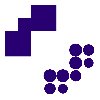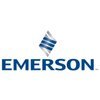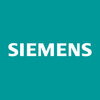System Engineer Hardware
100+ System Engineer Hardware Interview Questions and Answers

Asked in Infosys

Q. How many ways can CSS be included in HTML?
CSS can be included in HTML in three main ways: inline, internal, and external.
Inline CSS - using the style attribute within an HTML element
Internal CSS - using the <style> tag within the <head> section of the HTML document
External CSS - linking an external CSS file to the HTML document using the <link> tag

Asked in TCS

Q. What are the concepts of OOPs?
OOPs concepts are the fundamental principles of Object-Oriented Programming that help in designing and implementing software systems.
Encapsulation: bundling of data and methods that operate on that data
Inheritance: creating new classes from existing ones
Polymorphism: ability of objects to take on multiple forms
Abstraction: hiding implementation details and showing only functionality
Examples: Java, C++, Python, Ruby

Asked in Infosys

Q. What is the difference between pass by value and pass by reference?
Place by value passes a copy of the value, while place by reference passes a reference to the original value.
Place by value creates a new copy of the value, while place by reference uses the original value.
Place by value is used for simple data types like integers and floats, while place by reference is used for complex data types like arrays and objects.
An example of place by value is passing an integer to a function, while an example of place by reference is passing an arra...read more

Asked in Infosys

Q. Which book do you refer to for computer networks?
Computer Networking: A Top-Down Approach by James Kurose and Keith Ross
Provides a comprehensive overview of computer networking concepts and protocols
Covers both theoretical foundations and practical applications
Includes real-world examples and case studies for better understanding

Asked in Infosys

Q. How would you display the top 5 rows from a table?
Use SQL query with LIMIT clause to display top 5 rows from a table.
Use SELECT statement to retrieve data from the table
Add LIMIT 5 at the end of the query to display only the top 5 rows

Asked in Tietoevry

Q. Have you worked with Production Environments?
Yes, I have experience working with Production Environments.
Managed and maintained production servers to ensure uptime and performance
Deployed software updates and patches in production environments
Troubleshooted and resolved issues in live production systems
System Engineer Hardware Jobs




Asked in Infosys

Q. Tell me about the principles of OOPs.
OOPs principles are encapsulation, inheritance, and polymorphism.
Encapsulation is the process of hiding implementation details from the user.
Inheritance allows a class to inherit properties and methods from another class.
Polymorphism allows objects to take on multiple forms or behaviors.
Abstraction is the process of hiding complex implementation details from the user.
Objects are instances of classes that contain data and behavior.
Classes are templates for creating objects wit...read more

Asked in Infosys

Q. What is the difference between method overriding and method overloading?
Method overriding is when a subclass provides a specific implementation of a method that is already provided by its parent class, while method overloading is when multiple methods have the same name but different parameters.
Method overriding involves inheritance and is used to provide a specific implementation of a method in a subclass.
Method overloading involves having multiple methods with the same name but different parameters in the same class.
In method overriding, the me...read more
Share interview questions and help millions of jobseekers 🌟


Asked in TCS

Q. What are the pillars of OOPs?
The pillars of OOP are encapsulation, inheritance, polymorphism, and abstraction, forming the foundation of object-oriented programming.
Encapsulation: Bundling data and methods that operate on the data within one unit (class). Example: A class 'Car' with attributes like 'color' and methods like 'drive()'.
Inheritance: Mechanism to create a new class using properties of an existing class. Example: 'ElectricCar' inherits from 'Car'.
Polymorphism: Ability to present the same inter...read more

Asked in Infosys

Q. What languages support the OOPS concept?
Languages that support OOPS concept include Java, C++, Python, C#, and Ruby.
Java
C++
Python
C#
Ruby

Asked in TCS

Q. What is react? Why we use fragment? Why not div
React is a JavaScript library for building user interfaces. Fragments are used to group multiple elements without adding extra nodes. Div is a block-level element.
React is a JavaScript library for building user interfaces.
Fragments are used to group multiple elements without adding extra nodes.
Using fragments can help improve performance by reducing the number of DOM nodes.
Div is a block-level element that adds an extra node to the DOM.

Asked in TCS

Q. What are the differences between Java OOP and Python OOP?
Java OOPS is class-based and strongly typed, while Python OOPS is dynamic and duck-typed.
Java OOPS requires explicit declaration of data types, while Python OOPS does not.
Java OOPS has strict rules for inheritance and polymorphism, while Python OOPS allows for more flexibility.
Java OOPS has a more verbose syntax, while Python OOPS is more concise and readable.
Example: Java - public class Car extends Vehicle; Python - class Car(Vehicle):

Asked in Infosys

Q. Python and its real world applications
Python is a versatile programming language used in various real-world applications such as web development, data analysis, artificial intelligence, and automation.
Web development: Django and Flask are popular Python frameworks for building websites and web applications.
Data analysis: Python is widely used in data science for tasks like data cleaning, visualization, and machine learning.
Artificial intelligence: Python libraries like TensorFlow and PyTorch are used for developi...read more

Asked in Infosys

Q. What are the different types of CSS styling?
Different types of CSS styling include inline, internal, external, and imported stylesheets.
Inline CSS is applied directly to an HTML element using the style attribute.
Internal CSS is defined within the head section of an HTML document using the style tag.
External CSS is stored in a separate file and linked to the HTML document using the link tag.
Imported stylesheets allow for modular CSS by importing one stylesheet into another using the @import rule.

Asked in Infosys

Q. What is the OOPS concept?
OOPS stands for Object-Oriented Programming System. It is a programming paradigm based on the concept of objects.
OOPS is based on four main concepts: encapsulation, inheritance, polymorphism, and abstraction.
Encapsulation is the process of hiding the implementation details of an object from the outside world.
Inheritance allows a class to inherit properties and methods from another class.
Polymorphism allows objects of different classes to be treated as if they were of the same...read more

Asked in TCS

Q. What are the different types of polymorphism?
Polymorphism refers to the ability of an object to take on many forms. There are two types of polymorphism: compile-time and runtime.
Compile-time polymorphism is achieved through function overloading and operator overloading.
Runtime polymorphism is achieved through virtual functions and function overriding.
Example of compile-time polymorphism: function overloading - multiple functions with the same name but different parameters.
Example of runtime polymorphism: virtual functio...read more

Asked in TCS

Q. Why did you switch from a mechanical background to IT?
Transition from mechanical core to IT was driven by passion for technology and desire to work on cutting-edge systems.
Passion for technology and interest in IT drove the transition
Desire to work on cutting-edge systems and innovative projects
Opportunity to expand skill set and explore new career paths
Recognized the growing importance of IT in modern industries

Asked in Atos

Q. What are the causes of boot failure?
Common causes for boot failure include hardware issues, software errors, and incorrect BIOS settings.
Hardware failure (e.g. faulty hard drive, RAM issues)
Software errors (e.g. corrupted operating system files)
Incorrect BIOS settings (e.g. boot order misconfiguration)

Asked in Accenture

Q. Explain the automation framework that you have worked on.
I have worked on a keyword-driven automation framework using Selenium and TestNG.
Used Excel sheets to store test data and keywords
Implemented reusable functions for common actions
Integrated with Jenkins for continuous integration
Supported parallel execution for faster testing

Asked in Infosys

Q. What is Scrum?
Scrum is an agile framework for managing and completing complex projects.
Scrum involves a team working together to complete a project in short iterations called sprints.
The team has daily stand-up meetings to discuss progress and plan for the day.
Scrum emphasizes flexibility and adaptability to changing requirements.
The product owner prioritizes the backlog of work and the team works to complete the highest priority items first.
Scrum includes roles such as the Scrum Master, P...read more

Asked in TCS

Q. Explain data encapsulation and data hiding.
Data encapsulation is the bundling of data with the methods that operate on that data, while data hiding is the concept of hiding the implementation details of a class from the outside world.
Data encapsulation bundles data and methods together to protect data from outside interference.
Data hiding hides the implementation details of a class, allowing only necessary information to be accessed.
Encapsulation helps in achieving data abstraction and information hiding.
Example: In o...read more

Asked in Alpha Design Technologies

Q. How do you identify circuits in a given schematic?
Identifying circuits in a schematic involves understanding the symbols and connections used in the diagram.
Familiarize yourself with common symbols used in schematics
Trace the connections between components to identify circuits
Use a multimeter to test for continuity and isolate circuits
Look for patterns in the schematic to identify repeating circuits

Asked in Genpact

Q. What is a garbage collector in JAVA?
Garbage collector in JAVA is a program that automatically frees up memory by removing objects that are no longer in use.
Garbage collector is a part of JVM that manages memory allocation and deallocation
It runs in the background and frees up memory by removing objects that are no longer in use
It helps prevent memory leaks and improves performance
Examples of garbage collectors in JAVA are Serial, Parallel, CMS, and G1

Asked in TCS

Q. Given a list of cities and the distances between each pair of cities, what is the shortest possible route that visits each city exactly once and returns to the origin city?
The Travelling Salesman Problem is a classic optimization problem where a salesman must visit a set of cities exactly once and return to the starting city with the shortest possible route.
Involves finding the shortest possible route that visits each city exactly once and returns to the starting city
Considered a NP-hard problem, meaning there is no known efficient algorithm to solve it for large number of cities
Applications in logistics, network routing, DNA sequencing, etc.
Ex...read more

Asked in TCS

Q. Data structures, difference between hashmap, set, lists
HashMap, set, and lists are different data structures used in programming for storing and organizing data efficiently.
HashMap: key-value pairs, allows fast lookup of values based on keys (e.g. phonebook)
Set: collection of unique elements, no duplicates allowed (e.g. set of unique user IDs)
Lists: ordered collection of elements, allows duplicates and maintains insertion order (e.g. list of tasks)

Asked in Infosys

Q. what are hash maps and hash table?
Hash maps and hash tables are data structures that store key-value pairs and use a hash function to map keys to values for efficient retrieval.
Hash maps and hash tables are used to implement associative arrays, dictionaries, and sets.
They use a hash function to compute an index into an array of buckets or slots, where the value is stored.
Collision resolution techniques like chaining or open addressing are used to handle situations where multiple keys map to the same index.
Exa...read more

Asked in TCS

Q. List the different frameworks used in automation testing.
Automation testing frameworks streamline the testing process, enhancing efficiency and accuracy in software development.
1. **Data-Driven Framework**: Separates test scripts from test data, allowing for multiple data sets. Example: Apache POI for Excel data.
2. **Keyword-Driven Framework**: Uses keywords to represent actions, making it easier for non-technical users. Example: Selenium with Cucumber.
3. **Behavior-Driven Development (BDD)**: Focuses on the behavior of the applica...read more

Asked in Infosys

Q. Write a program to calculate the factorial of a number.
A program to calculate factorial of a number.
Take input from user
Use a loop to multiply the number with all the numbers less than it
Print the result

Asked in Atos

Q. How is the yum command used?
yum command is used to install, update, remove, or manage packages on Linux systems.
Install a package: yum install package_name
Update all packages: yum update
Remove a package: yum remove package_name
List available packages: yum list available

Asked in TCS

Q. Have you worked in an Agile process?
Yes, I have experience working in Agile process.
I have worked in Agile teams following Scrum framework
I have experience in sprint planning, daily stand-ups, sprint reviews, and retrospectives
I have collaborated closely with cross-functional teams to deliver high-quality products
I have used tools like Jira for Agile project management
Interview Experiences of Popular Companies





Top Interview Questions for System Engineer Hardware Related Skills

Calculate your in-hand salary
Confused about how your in-hand salary is calculated? Enter your annual salary (CTC) and get your in-hand salary


Reviews
Interviews
Salaries
Users










